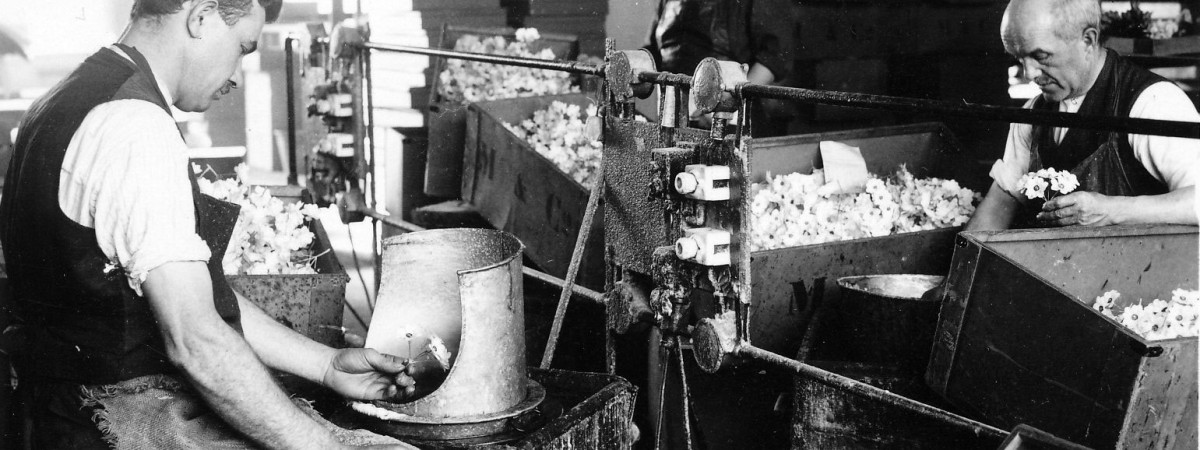History
The start of the Sebnitzer artificial flower industry relates to flower makers from Northern Bohemia. For many years they exportet their products to Saxony. In 1834, Saxony joined the German Customs Union, as a result of which a high toll was levied on Bohemian goods. The flowers in Saxony rose drastically in price, and the Bohemian flower manufacturers soon got great sales problems. So they decided to transfer their manufactories to Sebnitz, which was situated directly on the Bohemian-Saxon border. Here artificial flower production, favored by fashion, achieved great economic importance within a few decades.
Around the turn of the 19th to the 20th century, there were more than 200 larger and smaller companies in Sebnitz. They employed up to 15,000 people in economic times, of whom about 90% were homeworkers.
Sebnitzer flowers were exported to many countries of the world, the local companies covered about three quarters of the world market demand for such products. Throughout history, however, the artificial flower industry also experienced times of decline. Emergency times made an invention and led to the development and manufacture of other products, such as festive and joke articles made of paper, cotton and chenille, as well as advent and Christmas decorations.
Until the German Reunification, the Sebnitzer artificial flower indistry remained one of the most important sectors of the local economy. Today twelve employees are still working in the factory.

